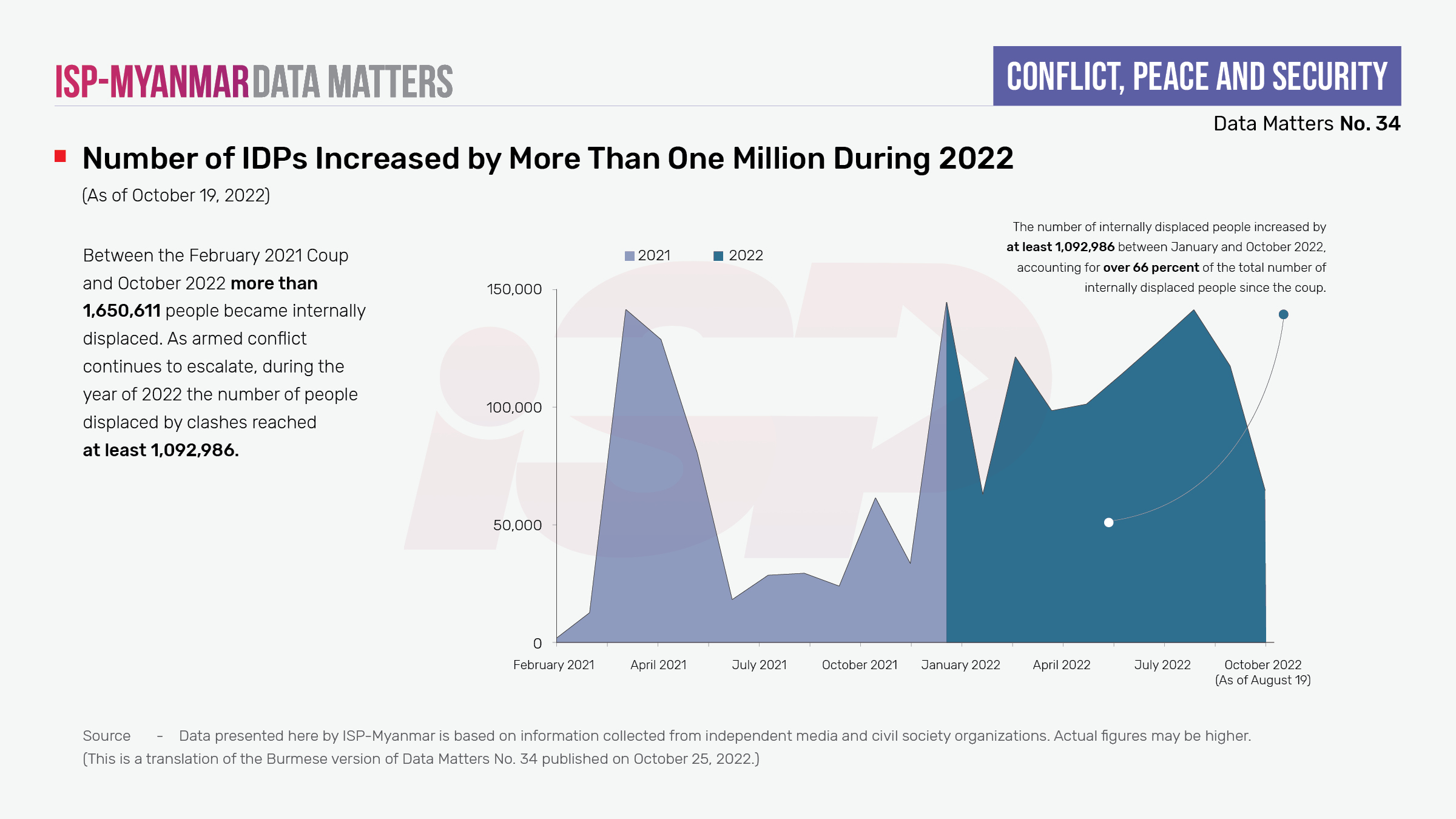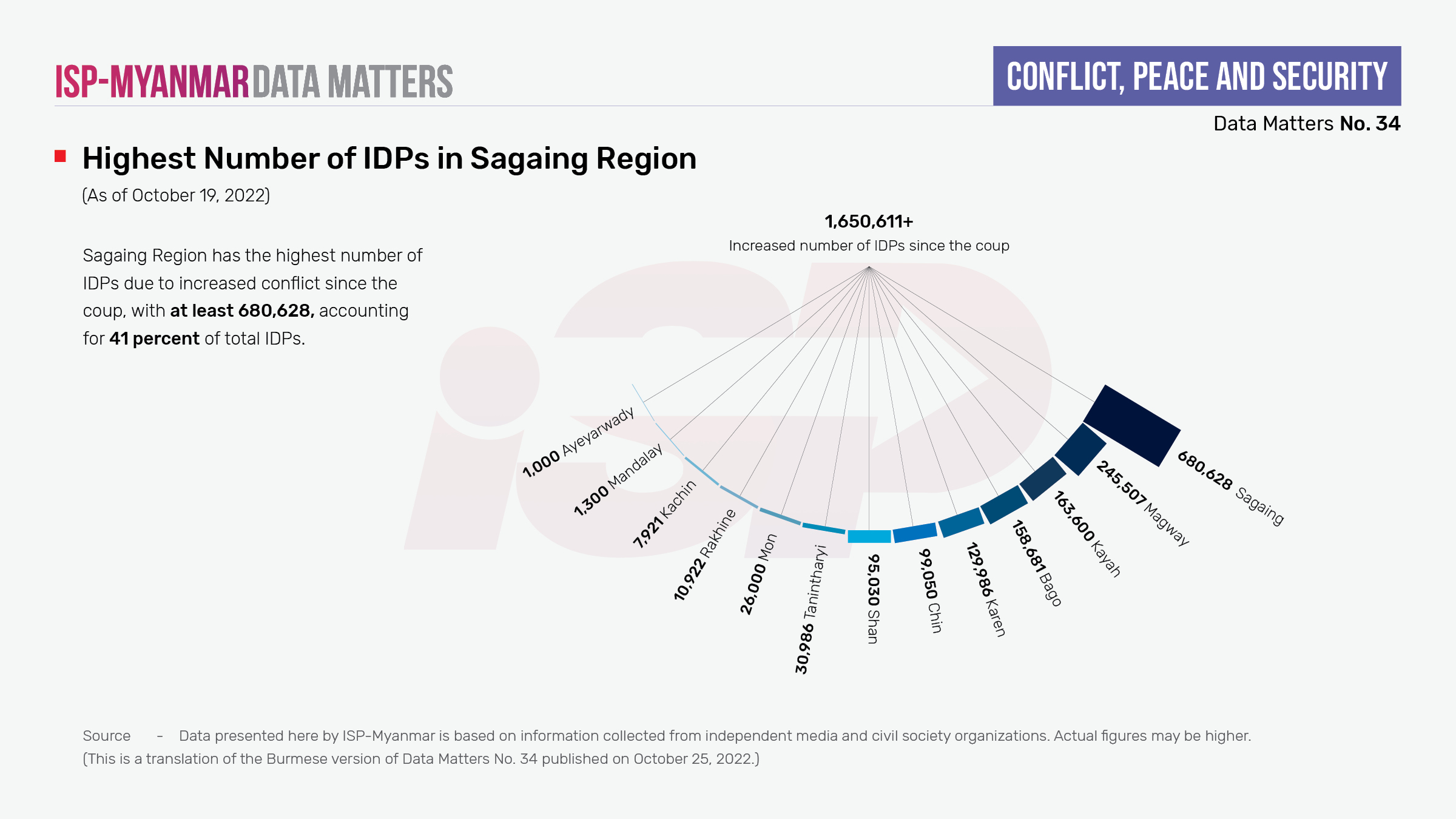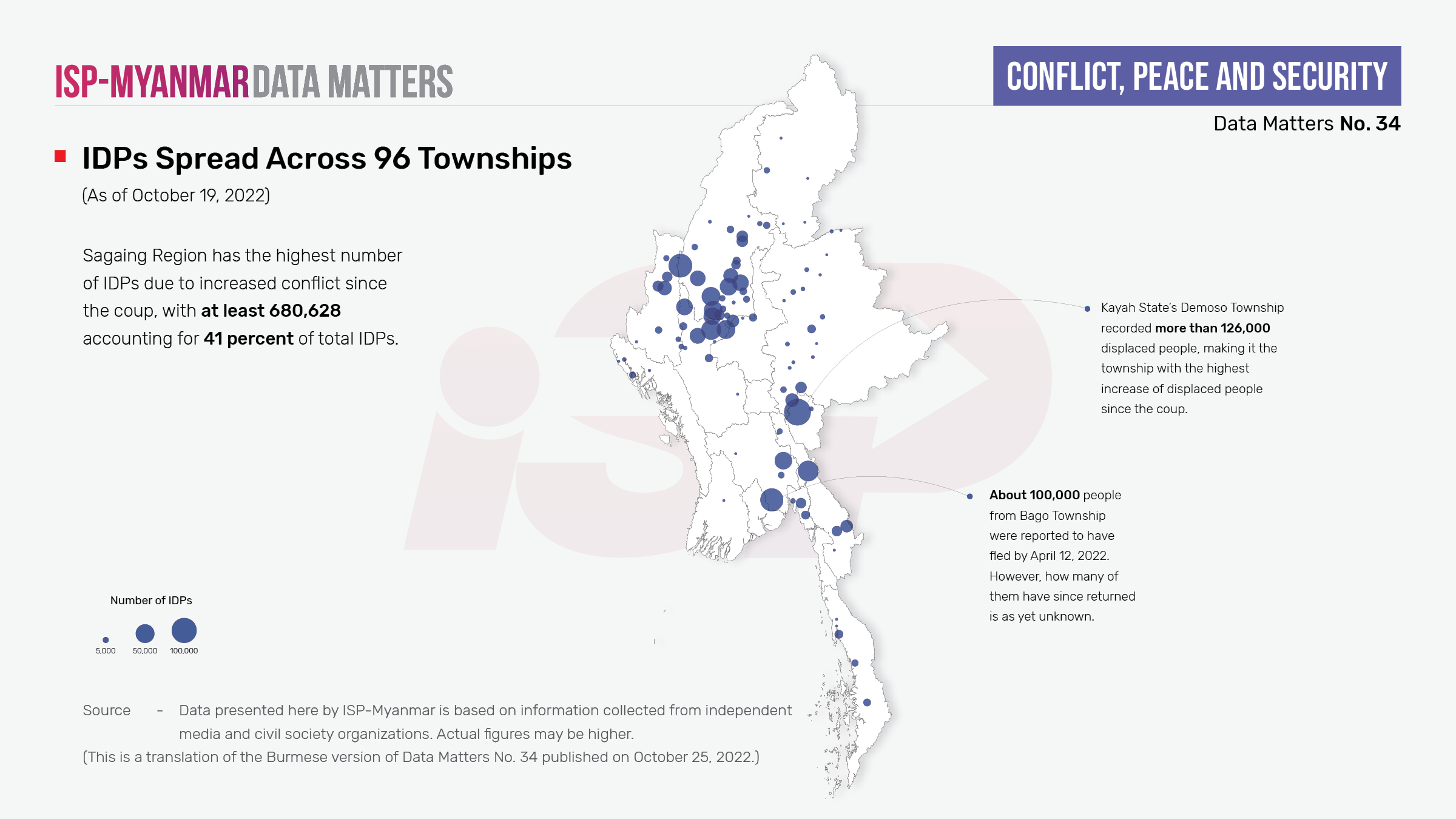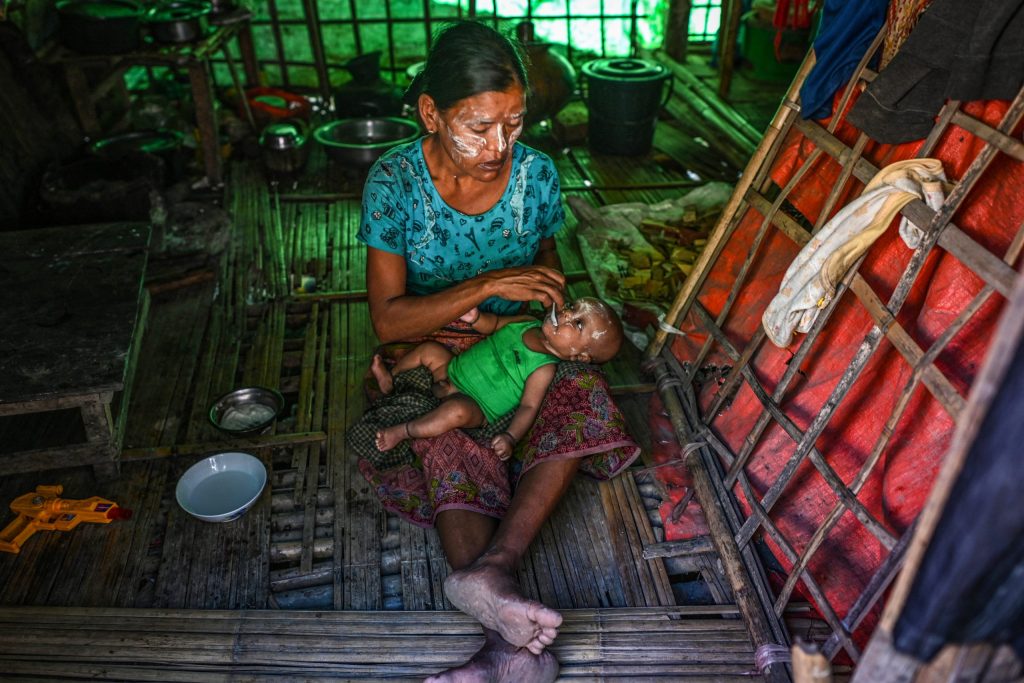Data Matters No. 34




Data up to October 19, 2022 shows the number of internally displaced people (IDPs) and refugees in Myanmar caused by armed conflict following the military coup has reached 1,650,611. There were also more than 497,200 IDPs who were already on the run due to armed conflict occurring before the coup. The combined number of cross-border refugees before and after the coup is at least 1,009,190.
As armed conflict continues to escalate, the number of people displaced by clashes throughout 2022 has reached at least 1,092,986. This figure accounts for over 66 percent of the total number of newly displaced people. Sagaing Region continued to record the highest number of IDPs with at least 680,628. Comparing township-level data, Kayah State’s Demoso Township recorded the highest number of IDPs with more than 126,000 displaced people.
∎ Why does it matter?
By looking at the number of civilian fatalities and injuries, how they were killed and wounded, and the number of people displaced by fighting involving SAC’s forces and EAOs, or within EAOs themselves, it is possible to examine whether or not armed forces have committed human rights violations from the perspective of transitional justice. In addition, by studying the post-coup situation, further research can be conducted to examine whether there has been a change in conditions related to Myanmar’s peace process.
∎ Other relevant readings
On-the-ground reports from ethnic news organizations and other independent media groups provide regular updates about conflict situations, their impact, and the collateral damage in the aftermath of the military coup. These include reports of renewed fighting in ethnic areas, civilian fatalities, and rising refugee and IDP issues on the ground. In addition, records and reports by United Nations organizations such as the United Nations Office for the Coordination of Humanitarian Affairs (UNOCHA), and other independent local and foreign organizations also provide information about the ongoing conflict situation in Myanmar.

